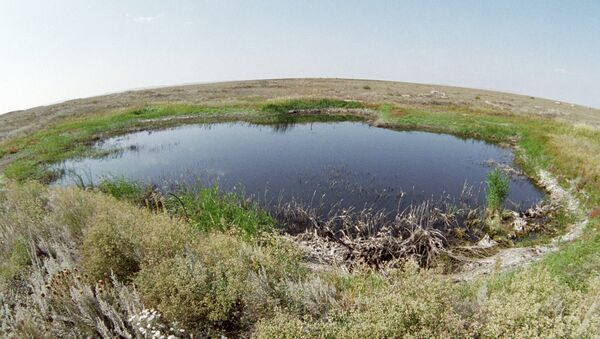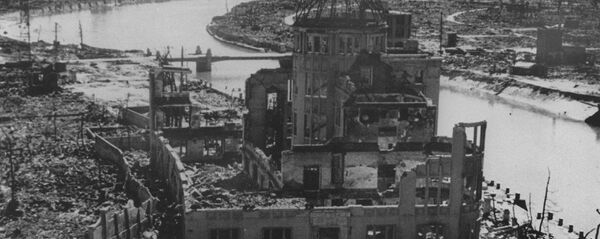"The excursion is undertaken using transportation, and with an experienced guide," explained Natalya Utenkova, representative of the NNC, which has its base at the Polygon.
"Tourists are given protective suits and footwear, and provided with respirators."
The excursion will show visitors the most notable areas of the test site, which is located in the plains of northeastern Kazakhstan, on the bank of the Irtysh River, 130 kilometers from the town of Semey, formerly known as Semipalatinsk.
"The starting object of the excursion program is the 'Experimental Field,' which was the first testing area of the Polygon and was used to carry out nuclear testing on the ground and in the air."

"The captivating appearance of the atomic lake is the result of underground atomic explosions," explains Utenkova.
"In 1965 an explosion was carried out at the confluence of the Shagan and Ashisu Rivers, which left a crater with a depth of more than 100 meters, and a diameter of 400 meters. When flood waters filled the crater it became a lake."
Utenkova also recommended tourists visit the Semipalatinsk Polygon Museum, which opened in 1972 and gives a complete lowdown of the site's three main testing grounds.
"In the medical-biological department of the museum, you can see the internal organs of animals, which demonstrate the effect of atomic waves and ionizing radiation."

The first explosion at the test site in 1949 yielded 22 kilotons of TNT, and the site was used to test the effects of 468 atomic explosions during its period of exploitation. Up to 1963, 125 explosions of atomic weapons were carried out above ground.
The final test at the site was carried out in October 1989, and in August 1991 the testing site was officially closed. After a clean-up operation by nuclear experts from Kazakhstan, the US and Russia, the last nuclear device at the site was destroyed in 1995.




